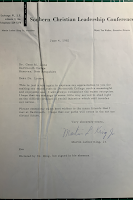When the pandemic hit campus in early 2021, there was a lot of hysteria and confusion. For Dartmouth students, trying to figure out how the rest of the 2020-2021 school year would look like was difficult, especially regarding housing. Trying to secure safe on-campus housing was a nightmare for everyone, but especially for low-income, international, and homeless students: Dartmouth simply did not have enough physical housing for all its enrolled students.
As the Spring 2022 Historical Accountability Fellow, my research aims to find an explanation for why Dartmouth does not have enough physical housing for its students even though the administration knows that it has more total students than rooms available.
Dartmouth is unique among colleges and universities, in that it implements not only a quarter system, but also something called the “D-Plan”. The D-Plan allows for students to be unenrolled for a term and do anything that they want, whether that be an internship, fellowship, traveling, working, or simply taking a break from their studies. Based on my research, the D-Plan is an integral reason as to why Dartmouth does not have sufficient housing for all students.
Before the Fall of 1971, Dartmouth was a male-only school. Only three Ivy League colleges had gone co-ed as Dartmouth was transitioning from single-sex to co-education. After going co-ed, mainly due to alumni complaints, Dartmouth decided to admit the same number of male students as it would have admitted before co-education, so that no potential male students would lose a spot in favor of a female student. However, the college also enrolled an additional 150 students, all of them female. The first year of co-education, the Fall of 1971, was a difficult time for Dartmouth housing and residential staff, to say the least.
Not only did they have to change and modify requirements for the incoming freshman to adjust for the D-Plan, but they also had to modify room capacity to accommodate the extra students. Making singles into double and doubles into triples, Dartmouth housing had to scramble to make sure that all students enrolled in the 1971 fall term had a bed to sleep on, not to mention making renovations to older dorms, displacing male students to create single-sex female dorms, and accommodating students living in common rooms while waiting on a vacancy.
Dartmouth College would not reach a steady state, meaning that all classes enrolled were subjected to the D-Plan and no major housing crisis would ensue, until the 1975-1976 school year. From the Fall of 1975 until about the early 90s, Dartmouth had no major housing crisis. The D-Plan allowed for the administration to take in more students but not have to physically create more housing.
And although no major housing crisis (or construction) occurred from the late 70s to the early 90s, Dartmouth did not build any new dormitories despite knowing how fragile the balance was between enrolled students and available on-campus housing. The Lodge, originally a small motel called the Motor Lodge, was transformed to Dartmouth Housing in the early 70s. However, while the conversion of the Lodge and renovations to the Choate and River Clusters and other dorm clusters did indeed increase the number of total dorms, it did not amount to a significant increase in space.
Only after a severe housing shortage in the Fall of 1994, where as many as 180 students were left without housing (after a record number of 3,845 students were enrolled for the term), did Dartmouth seem to believe that new construction was in order. Still, no new housing was available until 1996, with the completion of the Morton, Andres, McCulloch, and Zimmerman Halls, today known as the East Wheelock cluster.
Yet again in 2001, with the class of 2005, did Dartmouth have another housing crisis. New housing would not come until 2006, with the opening of opened the Fahey McLane and the McLaughlin Cluster. Another housing crisis occurred in the Fall of 2014, with the arrival of the abnormally large incoming class of 2018.
Evidently, there is a historical and cyclical discrepancy between how many Dartmouth students can be on-campus and enrolled per on a termly basis and how many beds Dartmouth has available for these students. My research aims to contextualize the housing crisis at Dartmouth to understand why and how Dartmouth has attempted to alleviate the strains on its housing system.
Posted for Rachel Perez '23, recipient of the Dartmouth Library's Historical Accountability Student Research Fellowship for the 2022 Spring term. The Historical Accountability Student Research Program provides funding for Dartmouth students to conduct research with primary sources on a topic related to issues of inclusivity and diversity in the college's past. For more information, visit the program's website.


